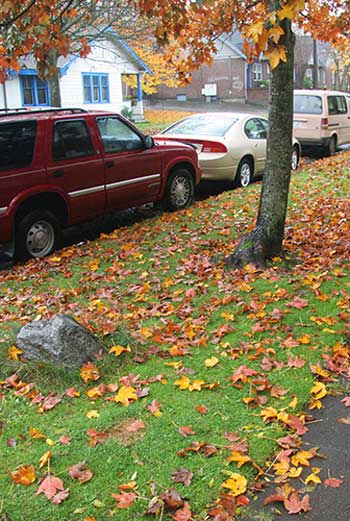Seattle's Emerging EcoDistrict
EcoDistrict planning and design can accelerate local efforts to improve sustainability. EcoDistricts offer a framework through which communities can discuss, prioritize, and enact initiatives that address climate change — by providing clean energy, conserving wildlife habitat, and encouraging low-impact development — and also social equity. If more neighborhoods begin to adopt the EcoDistrict model — wherein a range of partner organizations work in concert — we could see stronger bottom-up pushes toward city-wide sustainability.
Since 2011, the Capitol Hill EcoDistrict in Seattle's Capitol Hill neighborhood, which is funded by the Bullitt Foundation and led by Capitol Hill Housing, has sought to improve the sustainability of the community and the equity of its constituents. This EcoDistrict is partnering with the Seattle 2030 District, a high-performance business district in downtown Seattle, that aims to reduce carbon emissions 50 percent by 2030. In 2015, Seattle's City Council formally passed a resolution recognizing the EcoDistrict.
In the past few years, the EcoDistrict has made progress: Capitol Hill Housing and Seattle City Light started the first community solar project in Washington State. Participants in this program can "subscribe" to receive the benefits of solar via the systems built and maintained by Seattle City Light on the rooftop of the new Capitol Hill Housing, 12th Avenue Arts building, which houses 88 new apartments for low-income families, artist spaces, two theaters, various community organizations, and street-level retail spaces.
Also, innovative building projects are being encouraged to update the city's outdated land-use code, using a process of design review. As an example, The Bullitt Center helped launch the city's Living Building pilot program.
The EcoDistrict aims to address urban ecosystem fragmentation and the loss of tree canopy and open space. Capitol Hill Housing is partnering with the interdisciplinary designer Sarah Bergmann on the creation of the second certified Pollinator Pathway in the U.S. Each Pollinator Pathway connects two or more green spaces, following a set of scientific criteria.
Bergmann's first project, Pollinator Pathway One — a mile-long, 12-foot wide landscape first developed seven years ago — connects Seattle University's campus with Nora's Woods, a small forested area a mile away, through a series of connected gardens (see image above). The second project, Pollinator Pathway Two, will run through the heart of the Capitol Hill EcoDistrict and will connect two Olmsted-designed parks, the grounds of an elementary school, and Seattle University.
More knowledge sharing among EcoDistricts around the country will help lead to a replicable model. Already, EcoDistricts around the country are joining together: In 2014, the Portland, Oregon-based EcoDistrict organization has launched a program called Target Cities, a two-year partnership with ten development projects across eight North American cities.
This guest post is by Katy Scherrer, Student ASLA, master's of landscape architecture candidate, University of Washington.


